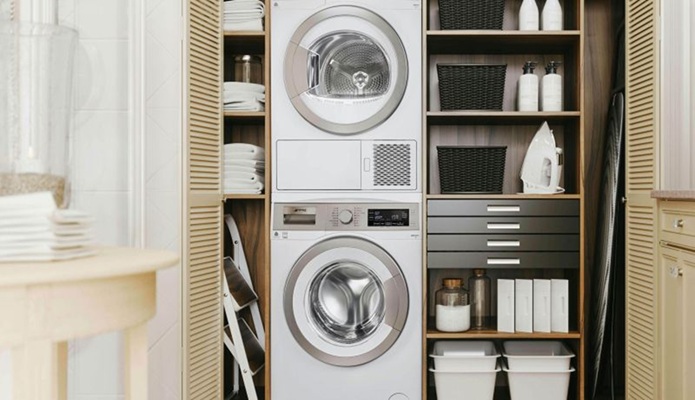
Laundry should be simple, right? Throw in some clothes, press a button, and go on with your day. But as any seasoned adult knows, it’s rarely that easy. Machines act up, cycles take forever, and you’re constantly wondering why your towels still smell weird. Add to that the invisible mental load—sorting, treating, folding, staying on top of it all—and it can quickly become one of the most frustrating chores at home.
Now, when your washer or dryer starts malfunctioning, it adds a whole new level of stress. Thankfully, not every laundry issue means a major repair bill. In this guide, we’ll walk you through practical, stress-free troubleshooting tips that can help you fix the most common problems with your home laundry unit.
1. Washer Not Draining? Check the Filter and Hoses
One of the most common washing machine problems is a unit that refuses to drain properly. If you find your clothes sitting in a pool of water after the cycle ends, the first thing to check is the drain filter—usually located behind a small panel near the base of the machine.
Lint, coins, and small socks love to hide there. Carefully unscrew the filter and remove any debris. While you’re at it, check the drain hose for any kinks or blockages.
2. Washer Making Loud Noises? It Could Be an Imbalance
Does your washer sound like a jet engine taking off? That unsettling noise is usually the result of an unbalanced load. When heavier items like towels or jeans clump together, they can throw off the machine’s rhythm.
Pause the cycle, rearrange the load, and start again. To prevent future issues, avoid overloading the drum and always mix large and small items.
3. Dryer Not Heating? Clean the Lint Trap and Vent
If your clothes are still damp after a full dryer cycle, a clogged lint trap or vent might be to blame. Excess lint restricts airflow, making the dryer work harder—and less effectively.
Start by cleaning the lint trap before every load. Then, at least once a month, check the dryer vent hose behind the unit. Lint buildup here is not only a performance issue but also a fire hazard.
4. Buttons Not Responding? Reset the Unit
Sometimes, your machine just needs a break too. If the display panel isn’t responding, try resetting the washer or dryer. This usually involves unplugging the unit for a minute or two, then plugging it back in.
Still nothing? This may be the point where a professional should step in. It’s especially important with brand-specific electronics like Samsung’s digital panels.
That’s when finding a reliable Samsung washing machine repair service makes all the difference. Look for certified technicians who understand the brand’s systems, use genuine parts, and offer a warranty on repairs. A trusted service will save you money—and headaches—down the line.
5. Machine Won’t Start? Try the Basics First
Before assuming the worst, double-check a few basics. Is the washer or dryer plugged in securely? Has a circuit breaker tripped? Is the door closed properly?
For many modern machines, especially smart models, a safety feature prevents operation if the door is even slightly ajar. Give it a firm push and try again.
6. Strange Smells? Run a Cleaning Cycle
If your washer has developed a musty odor, it’s probably due to detergent buildup, fabric softener residue, or trapped moisture. Most front-load washers have a self-clean cycle—use it with a specialized washing machine cleaner or a mix of vinegar and baking soda.
Leave the washer door open between loads to allow the drum to air out. For dryers, wipe down the drum and regularly check for lint accumulation beyond just the trap.
7. Leaking Water? Inspect the Door Seal and Hoses
Water on the floor? That’s never a good sign. Check the door seal on front-load washers for tears, mold, or detergent buildup. A damaged or dirty seal can prevent the door from closing tightly, allowing water to escape.
Also, inspect the water inlet hoses behind the unit. Make sure the connections are tight and the hoses are in good condition—no bulges or cracks.
Know When to DIY—and When to Call for Help
A little troubleshooting goes a long way when it comes to your home laundry unit. From strange sounds to water leaks, many problems are surprisingly simple to fix with basic tools and a bit of patience.
Still, not everything can—or should—be solved with DIY methods. If your machine is under warranty, or if the issue involves complex electronics or recurring breakdowns, don’t hesitate to call a professional.








